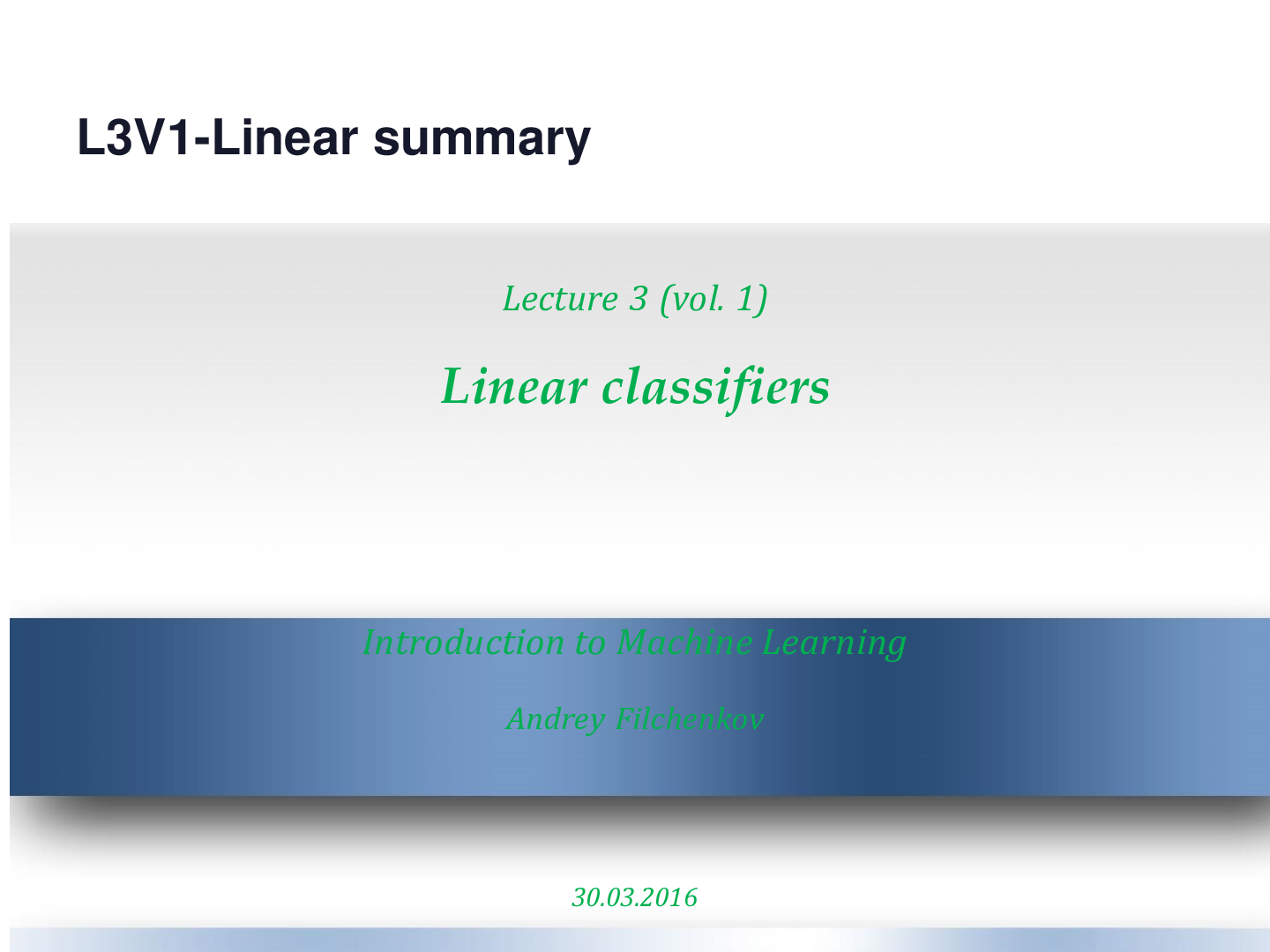Micro Biology > Summary > Summary Microbiology task 1.docx.docx (All)
Summary Microbiology task 1.docx.docx
Document Content and Description Below
Microbiology Task 1 McKenzie Mabey Introduction: Gram-positive and Gram-negative bacteria have a big difference in cell wall structure that is examined during the gram staining lab. Gram-positive ba... cteria have thick layers of peptidoglycan. When these bacteria are stained, using a crystal violet dye, they will remain purple. Gram-negative bacteria have thin peptidoglycan walls, which do not retain the purple dye. It must be counterstained with safranin turning them pink. Materials and Methods: There are four basic steps for gram staining. The first step is to flood the cells with crystal violet dye for 1 minute and then rinse. Step 2 is to put iodine on the cells so that the violet dye sticks more. Step 3 is to decolorize with alcohol to dissolve the cell membrane and then rinse with water. This step determines if the cells are positive or negative. If they are positive, the cells will remain purple, if they are negative, they will be clear. The final step is to counterstain with safranin for 30-60 seconds, then rinse with water and dry. The gram-negative cells will turn pink and the positive will stay purple. Results: The first image showing Escherichia-coli cells were pink from safranin and rod shaped. This shows that they are a Gram-negative bacteria. The second image, staphylococcus epidermidis, showed mostly Gram-positive cocci. Most of the cells were purple color, there were however some pink cocci and rods, which would show some gram-negative bacteria as well. Discussion: Gram-negative bacteria have a thin wall of peptidoglycan that is between and outer and inner cell membrane. The outer membrane contains endotoxins which contribute to reactions like fevers or shock. These bacteria are more prone to cause disease because they are more resistant to antibiotics making it harder to fight off the illness. Hands-on-Labs. (2015). Bacterial Morphology and Staining Techniques Experiment. Englewood, CO. Available from www.labpaq.com. Black, J. G., & Black, L. J. (2016). Microbiology: Principles and explorations (9th ed.). Hoboken, New Jersey: John Wiley & Sons. Print ISBN: 978-1-118-74316-4 [Show More]
Last updated: 1 year ago
Preview 1 out of 2 pages
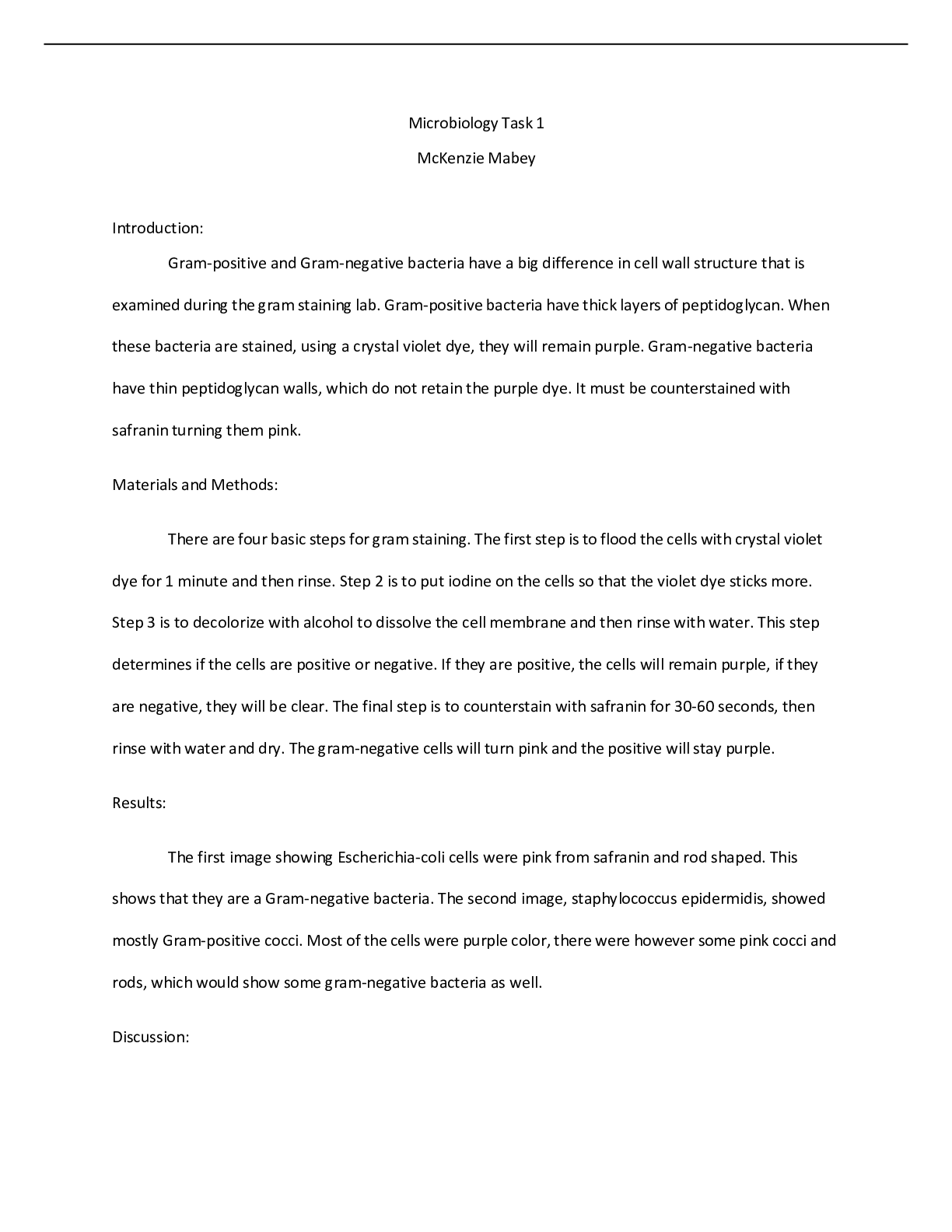
Reviews( 0 )
Document information
Connected school, study & course
About the document
Uploaded On
Sep 13, 2021
Number of pages
2
Written in
Additional information
This document has been written for:
Uploaded
Sep 13, 2021
Downloads
0
Views
71

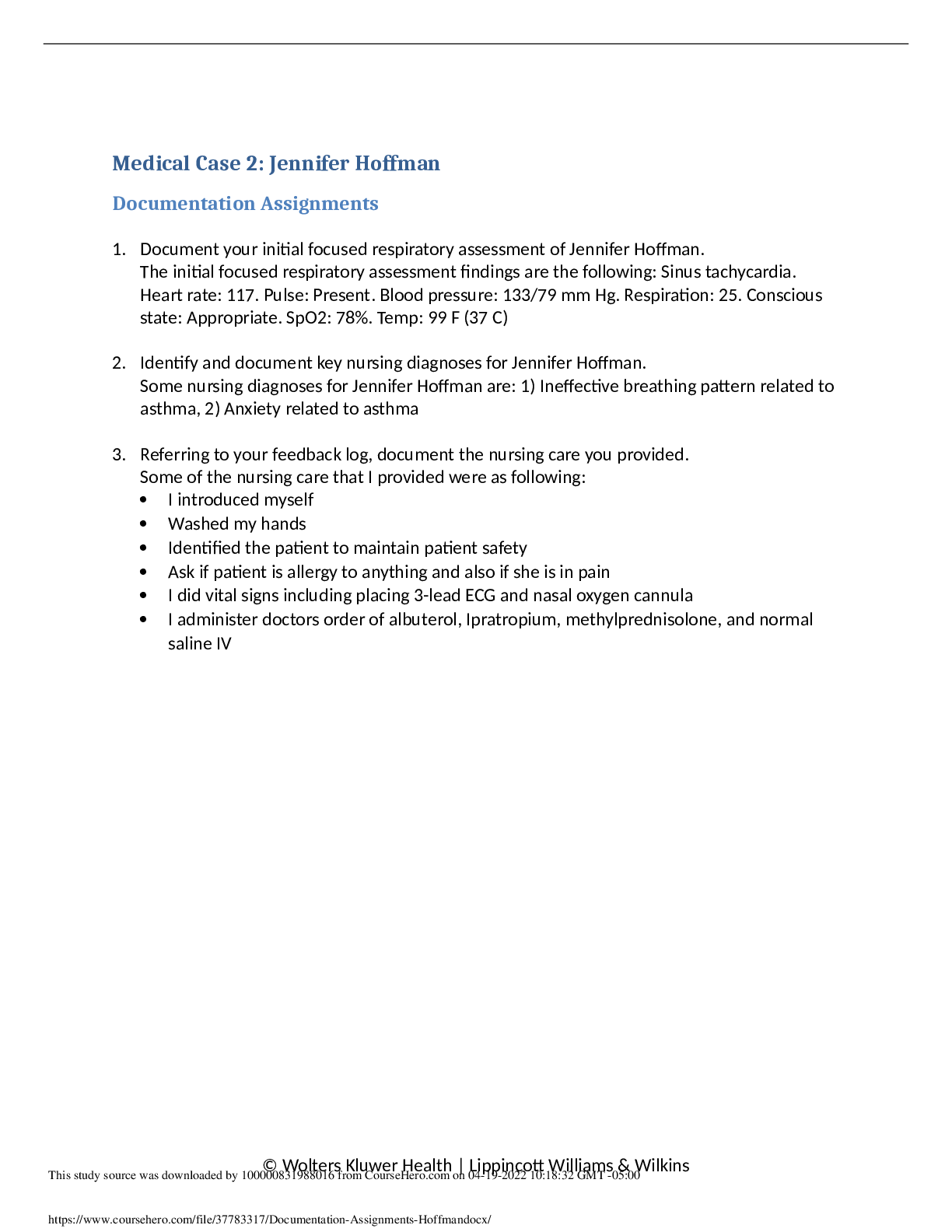





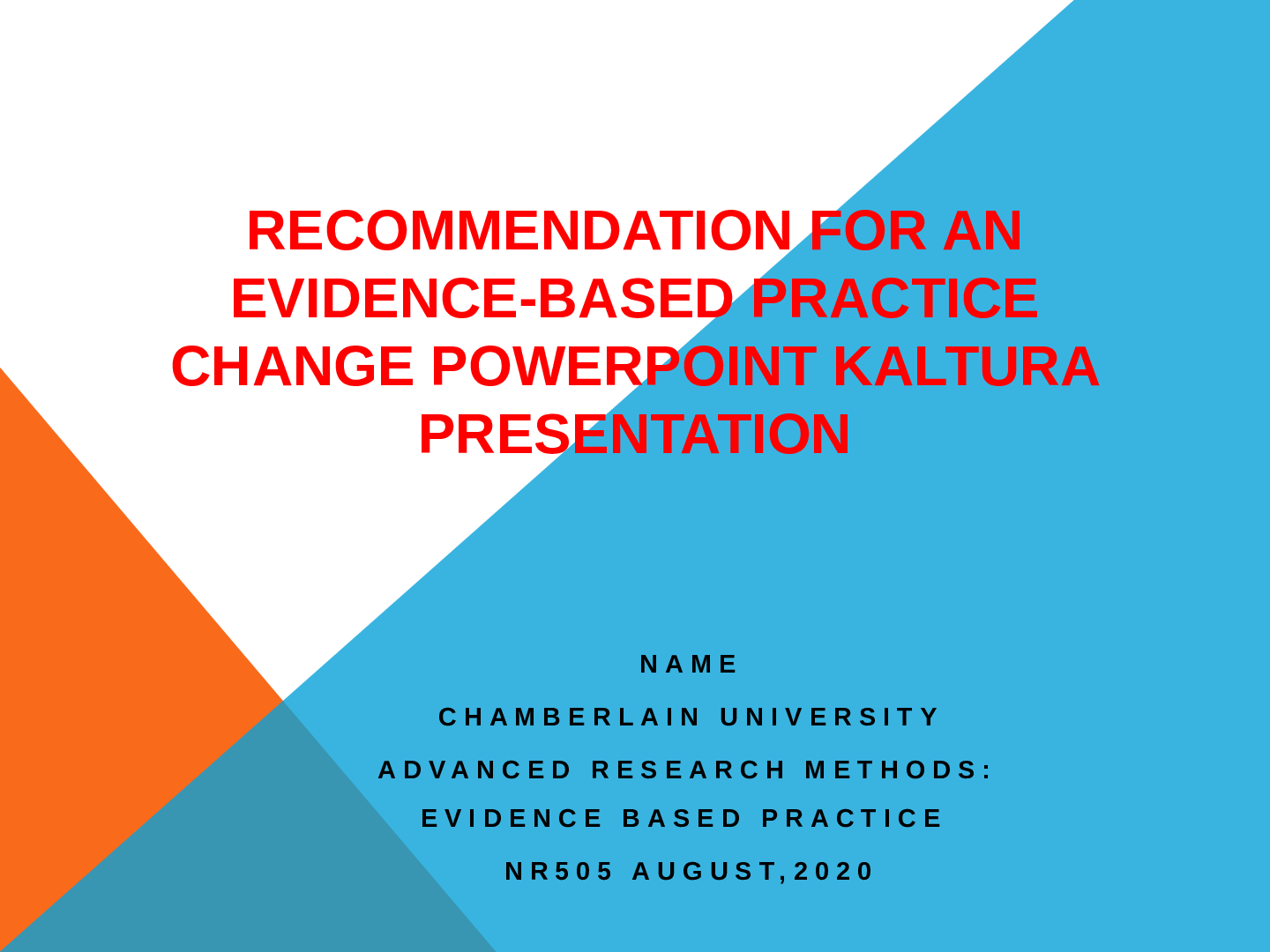
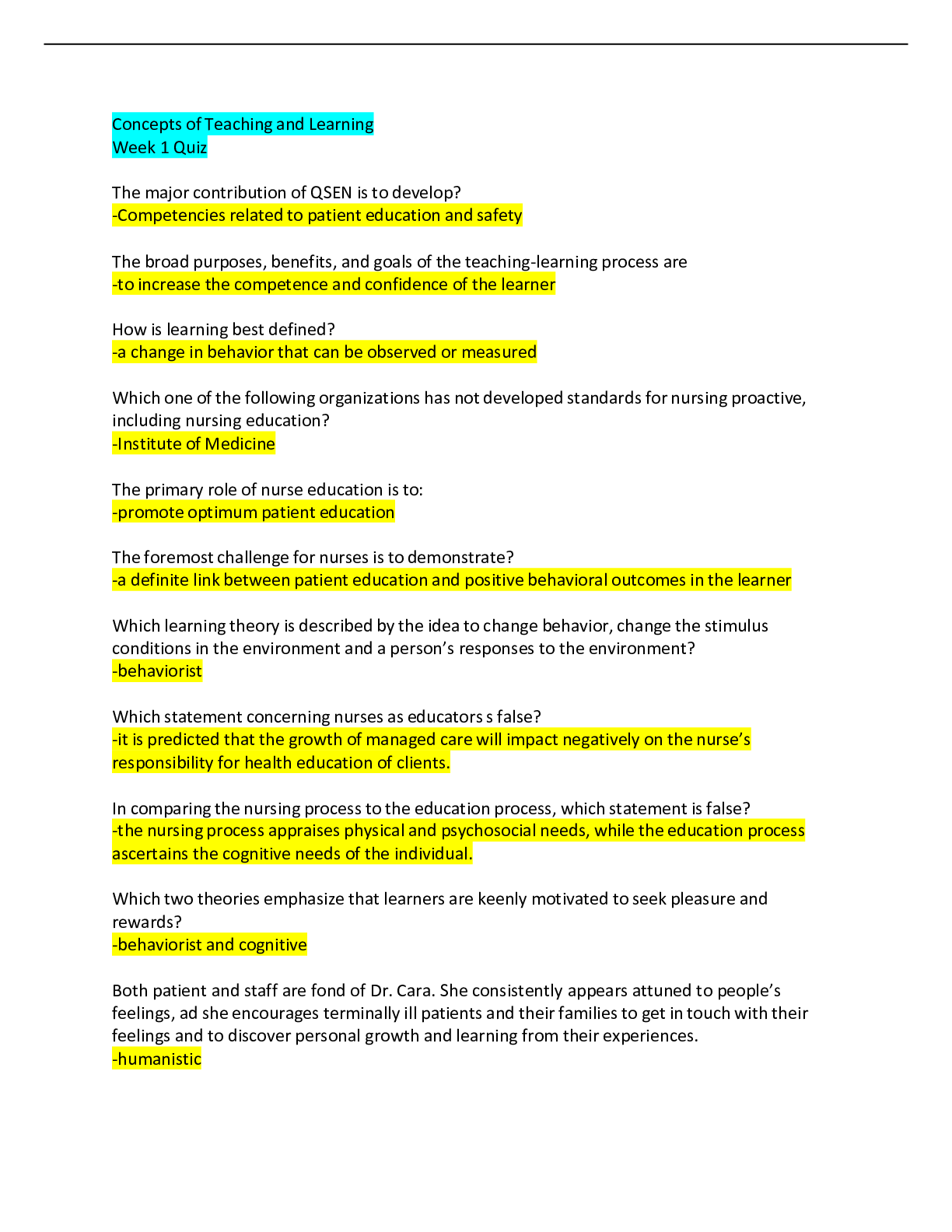









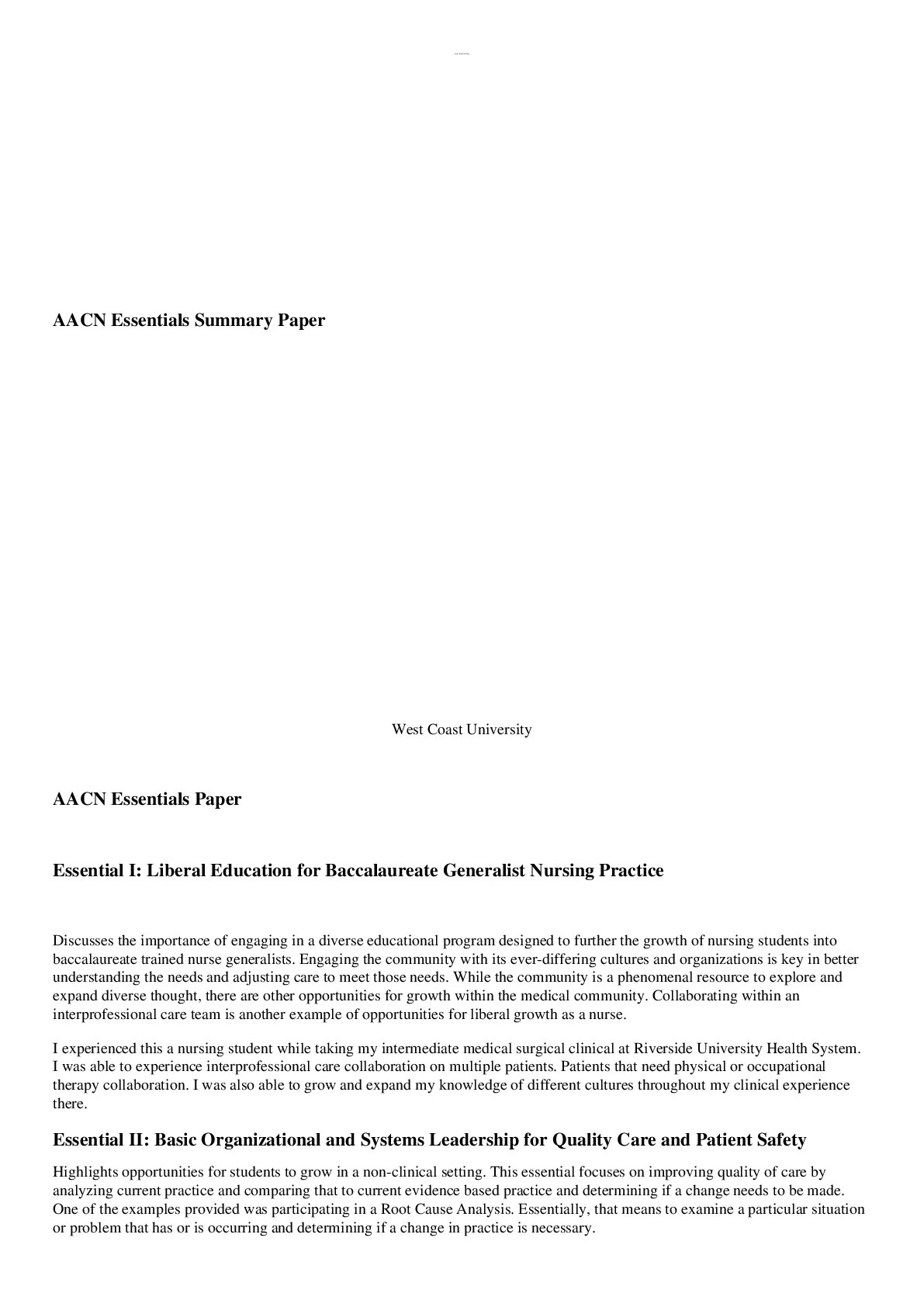



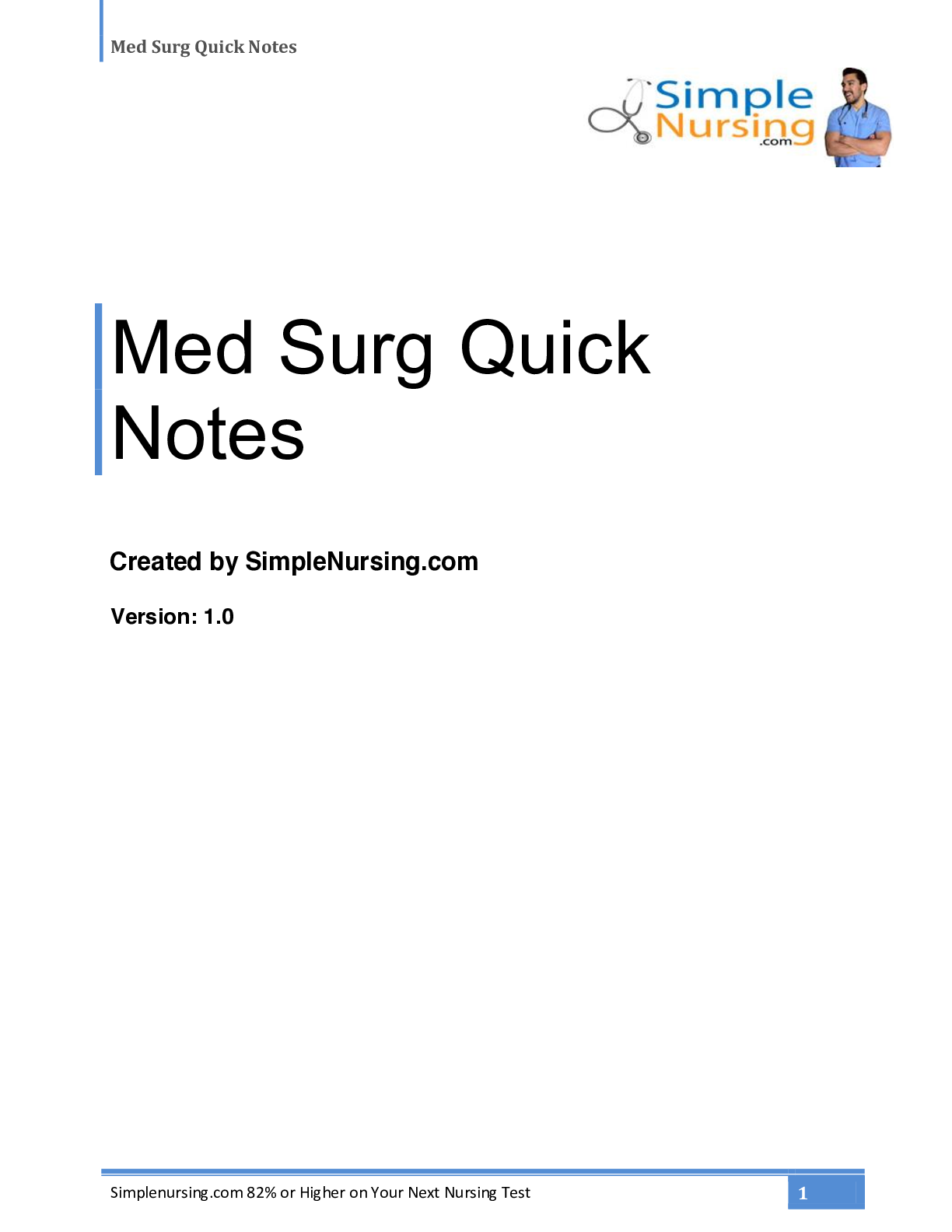
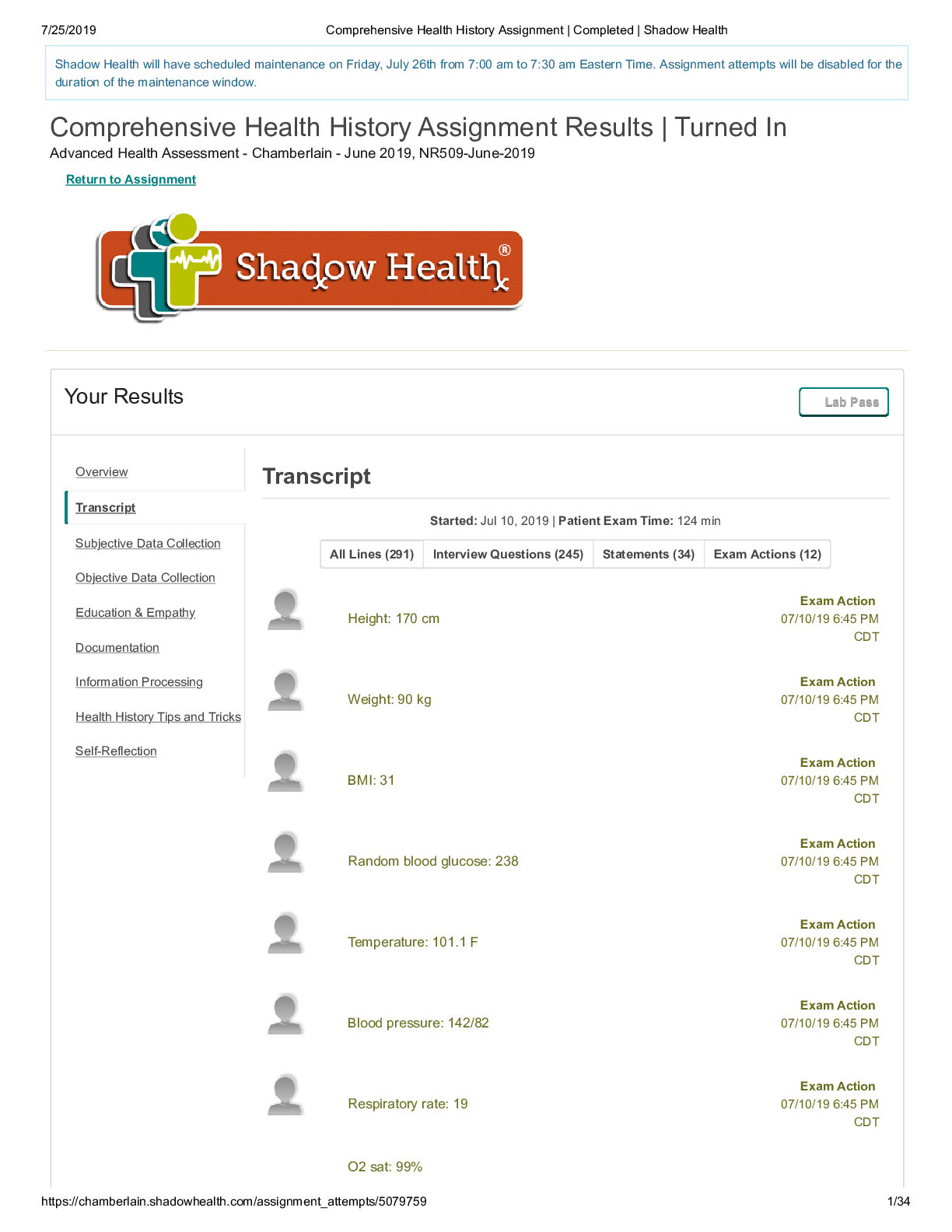
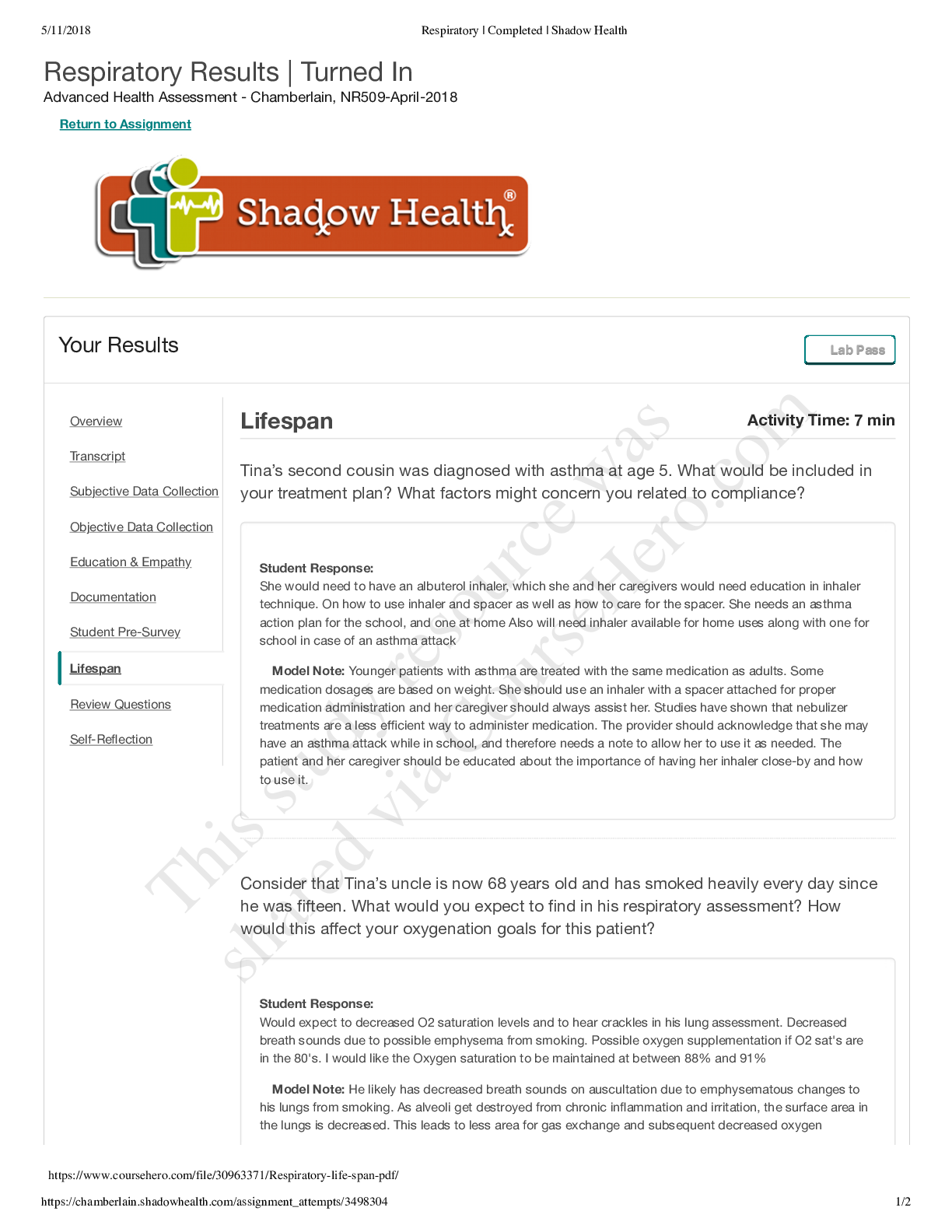


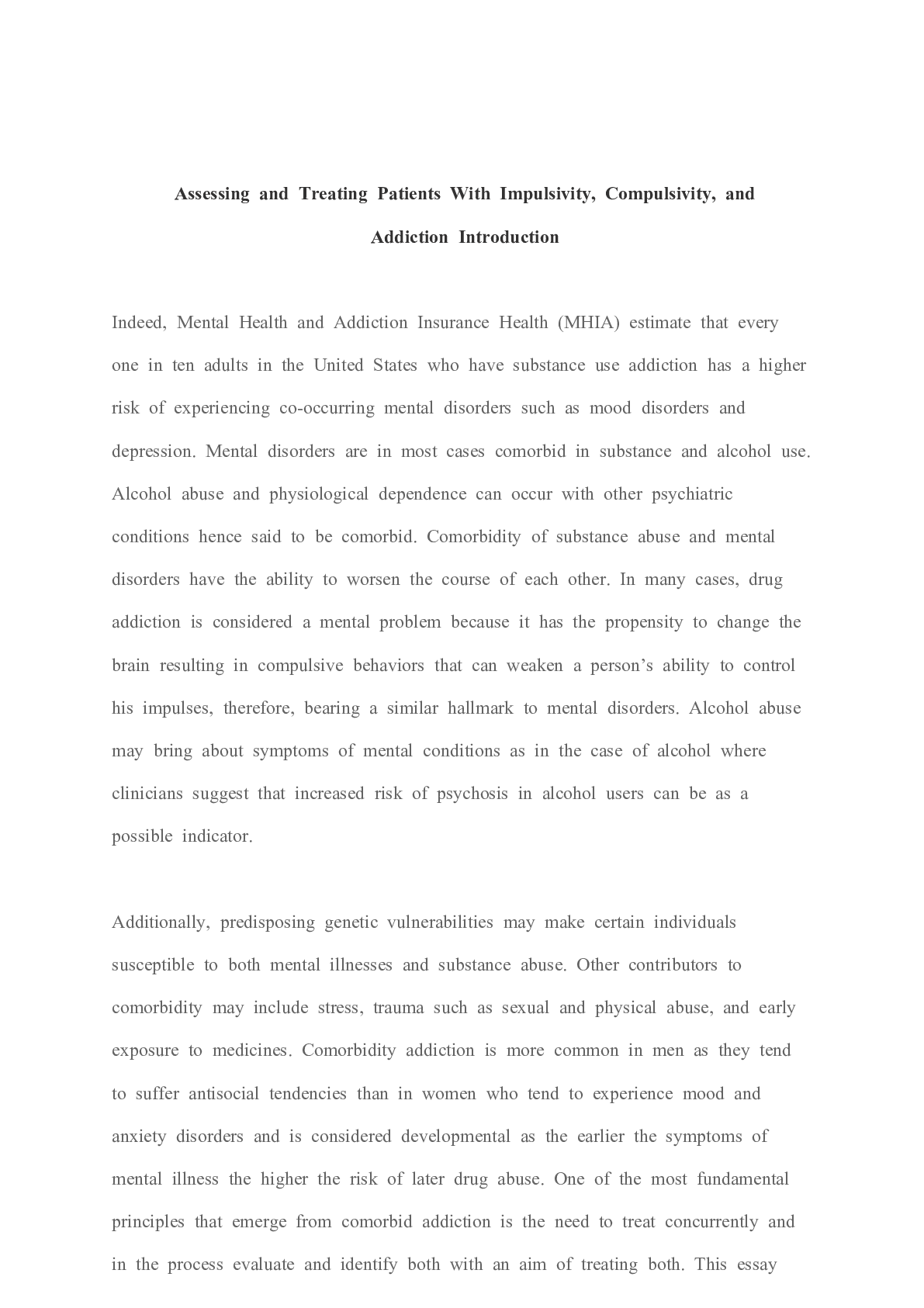



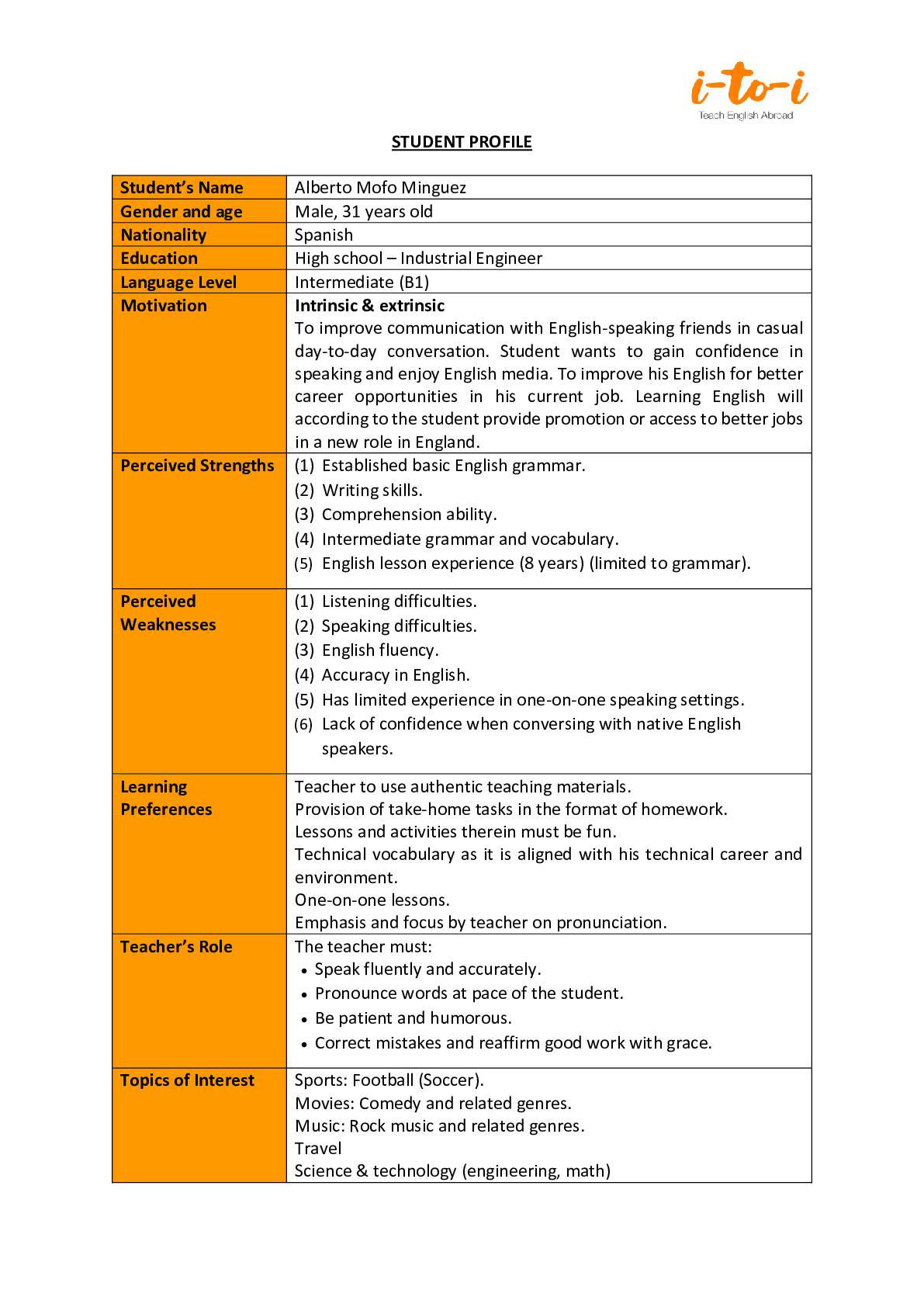
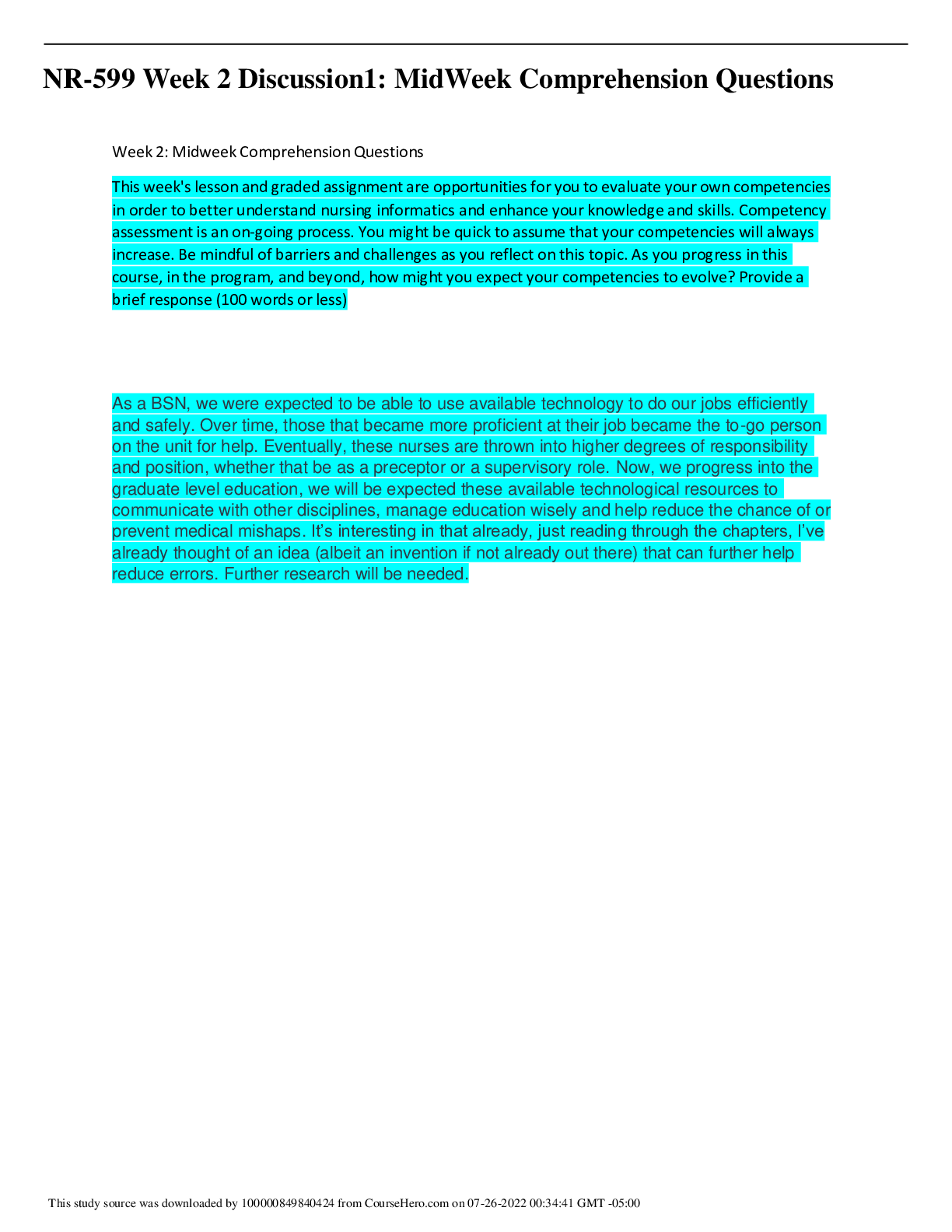

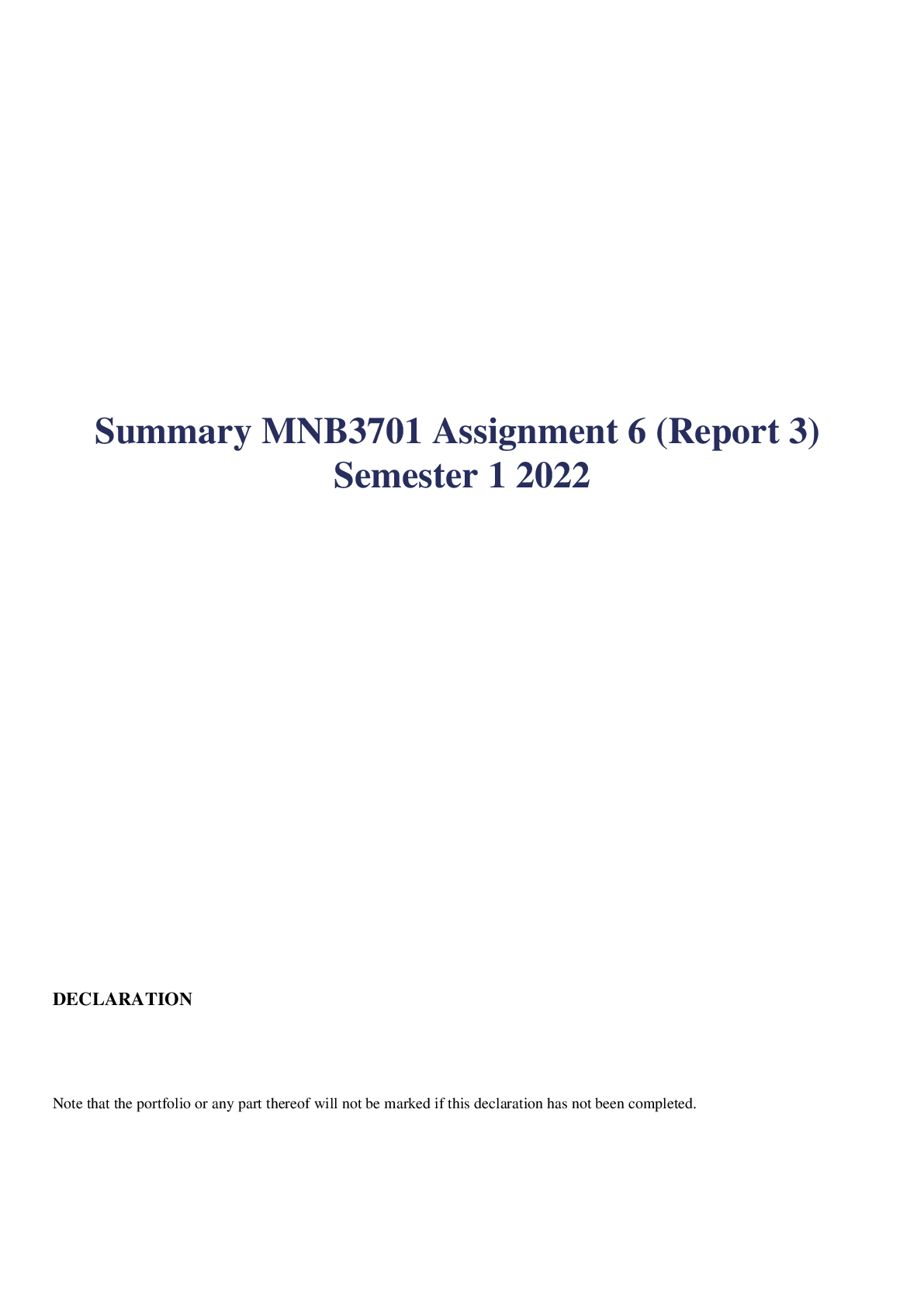
.png)
